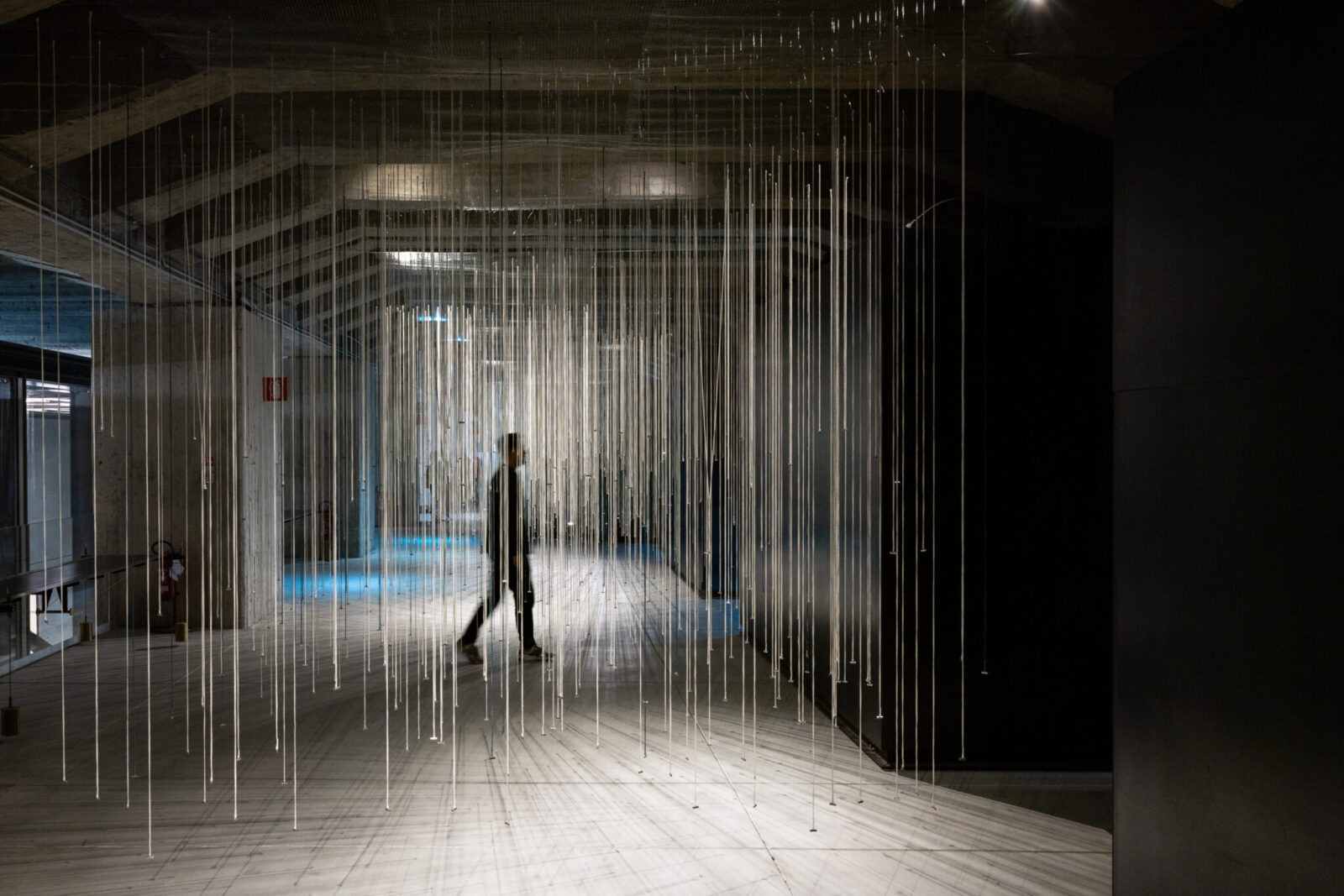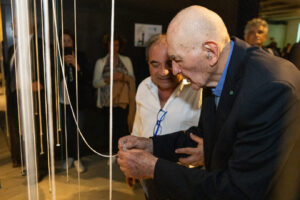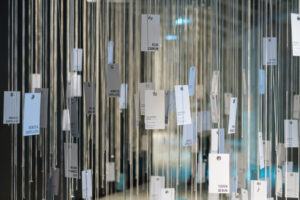MILAN – Rhodes and the Shoah, an Italian story

A forest of wires descends from the ceiling of the Shoah Memorial in Milan. There are 1,817 of them to be exact, almost all white, and with different lengths. The audience is invited to cross them to understand the magnitude of the tragedy. Those threads represent the 1,817 Rhodes Jews deported on July 23, 1944 from the Greek island. An entire Jewish community wiped out in a single day by Nazi-Fascist ferocity. The fate of those lives was not forgotten though, stressed Sara Buda and Daniela Scala of Contemporary Jewish Documentation Center – CDEC Foundation, curators of “Jews of Rhodes. Eclipse of a Community 1944-2024”, the exhibition (open until September 2) at the Milan Memorial. “Each visitor is asked to contribute by hanging a pre-printed card representing one of the deportees from one of the threads. The threads have different lengths, corresponding to the age reached on July 23, 1944. The shortest ones indicate infants,” Buda and Scala explained. Above the tags are the name, date and place of birth, and the name of the father and mother. “These are the essential data to give each deportee back his or her identity.”
 Among the threads and names appear those of Sami Modiano, born in Rhodes on July 18, 1930, and his family. “The Nazis took all the Jews on the island by deception on July 18, 1944. No one managed to escape, and five days later they loaded us onto an old barge: more than 1,800 people, thrown into the hold that the Germans had not even cleaned of animal excrement,” Modiano recounted, attending the opening of the exhibition at the Memorial.
Among the threads and names appear those of Sami Modiano, born in Rhodes on July 18, 1930, and his family. “The Nazis took all the Jews on the island by deception on July 18, 1944. No one managed to escape, and five days later they loaded us onto an old barge: more than 1,800 people, thrown into the hold that the Germans had not even cleaned of animal excrement,” Modiano recounted, attending the opening of the exhibition at the Memorial.
His thread is one of the few of a different color: teal. Along with only 178 others, Sami survived the journey and deportation to Auschwitz-Birkenau. “We survivors have a specific mission: to tell the cruelty of history that overwhelmed us. For a long time, when I came out of that hell, I asked myself why I survived, why me.” The reason was to witness the horror and not forget the lives and history of Rhodes, Modiano explained. A commitment carried on for decades by CDEC and historian Liliana Picciotto.
The installation at the Shoah Memorial and the portal ebreidirodi1944.CDEC.it dedicated to the Dodecanese Community, a group of islands in the southeastern Aegean Sea, bring together some of the work begun by Picciotto herself on the names of the Italian Shoah.
“Too often we forget that back then the Dodecanese was an Italian possession. And the fate of the Jews of Rhodes is marked by this misfortune: when in 1924 they were offered the choice between Italian and Turkish citizenship (Turkey previously ruled the island), the vast majority chose the former with conviction. They looked to Italian culture as a beacon of civilization,” Picciotto told Jewish Pages. When the Germans took control of the island in July 1944, only the few Jewish citizens of Turkey avoided arrest and deportation. The exhibition tells the fate of the rest.
The project was made possible thanks to the archive of Ester Fintz Menascé, donated to CDEC and a key part of the reconstruction of events in Rhodes, stressed Buda, a researcher at the Foundation. “The whole initiative, however, is not an end point. The involvement of the public is not only related to the installation – conceived by art director Sara Radice – but also to refine or add information to our research.”
 The appeal is for anyone with information on the 1,817 people to share it with CDEC. The preferred avenue, Scala added, is the portal. “We envisioned it as a place that can be extended and enriched and where users can interact with us. There is a fillable form in which to send new documents or data relevant to research,” explained Scala, head of the photographic area of the CDEC archive.
The appeal is for anyone with information on the 1,817 people to share it with CDEC. The preferred avenue, Scala added, is the portal. “We envisioned it as a place that can be extended and enriched and where users can interact with us. There is a fillable form in which to send new documents or data relevant to research,” explained Scala, head of the photographic area of the CDEC archive.
For Roberto Jarach, president of the Shoah Memorial Foundation, the exhibition on Rhodes represents a step in the relationship with CDEC. “It is an example of the synergy between the two institutions, with the goal of making memory and educating the younger generations,” he said.
“The deportation from the islands of Rhodes and Coo is an Italian story. 80 years after those events, we must not forget it,” Buda concluded. “It was an eclipse because the Community temporarily disappeared because of the Nazi-Fascist tragedy. But it was not annihilated. Today some of its people live scattered around the world: from the Congo to Belgium to the United States,” Scala added. And CDEC, with this project, seeks to bring this lived experience back to light.
Daniel Reichel
